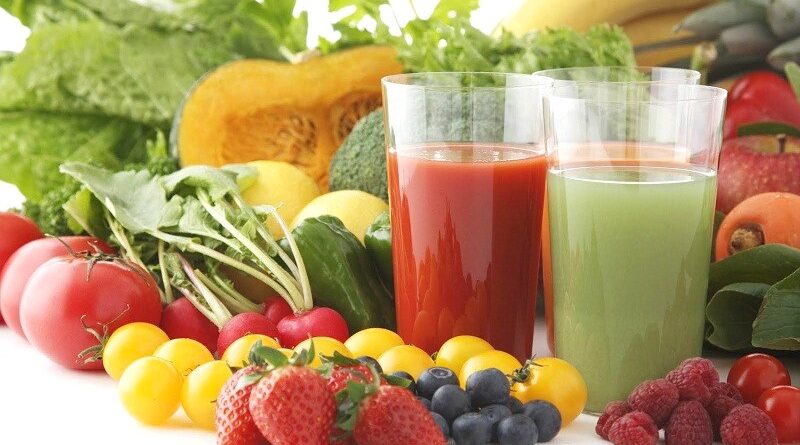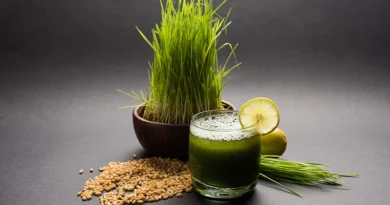Raw Juice Therapy – Benefits in treating Diseases
What is Raw juice therapy?
Raw juice therapy is a method of treatment of disease through an exclusive diet of juices of fruits and vegetables. It is also known as juice fasting. It is the most effective way to restore health and rejuvenate the body.
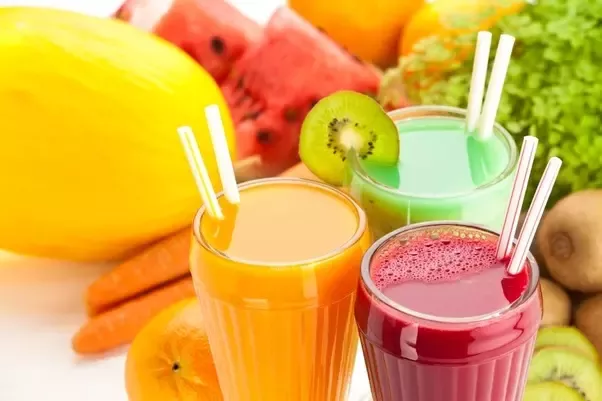
Benefits
During raw juice therapy, the eliminative and cleansing capacity of the organs of elimination, namely lungs, liver, kidneys and the skin, is greatly increased and masses of accumulated metabolic waste and toxins are quickly eliminated. It affords a physiological rest to the digestive and assimilative organs. After the juice fasting or raw juice therapy, the digestion of food and the utilisation of nutrients is vastly improved.
Raw juice therapy and diseases
An exclusive diet of raw juices of fruits and vegetables results in much faster recovery from diseases and more effective cleansing and regeneration of the tissues than the fasting on pure water. The reason is that during fasting the body burns up and excretes huge amounts of accumulated wastes. We can help this cleansing process by drinking alkaline juices instead of water while fasting. Elimination of uric acid and other inorganic acids will be accelerated. And sugars in juices will strengthen the heart.
As juices are extracted from plants and fruits, they possess definite medicinal properties. Specific juices are beneficial in specific conditions. Besides specific medicinal virtues, raw fruit and vegetable juices have an extraordinary revitalising and rejuvenative effect on all the organs, glands and functions of the body.
Favourable effects
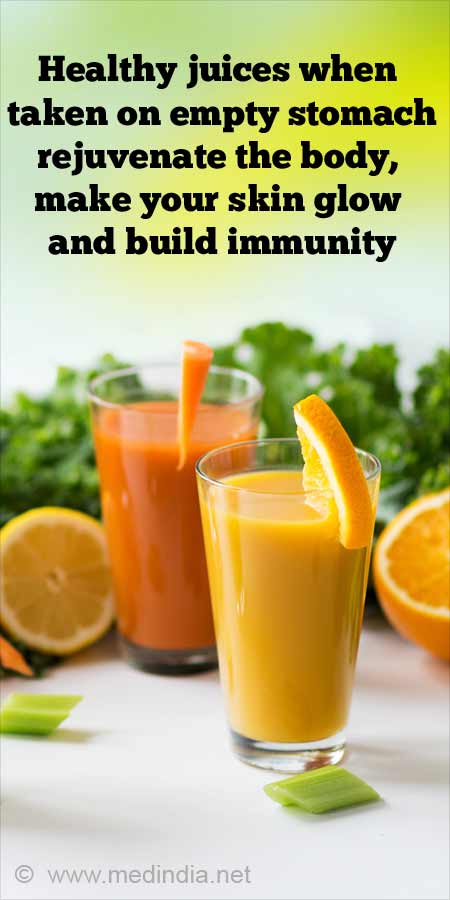
The favorable effect of the raw juices in the treatment of disease is attributed to the following facts:
- Raw juices of fruits and vegetables are extremely rich in vitamins, minerals, trace elements, enzymes and natural sugars. They exercise beneficial effect in normalising all the body functions. They supply needed elements for the body’s own healing activity and cell regeneration, thereby speeding the recovery.
- The juices extracted from raw fruits and vegetables require no digestion and almost all their vital nutrients are assimilated directly in the bloodstream.
- Raw juices are extremely rich in alkaline elements. This is highly beneficial in normalising acid-alkaline balance in the blood and tissues as there is over-acidity in most conditions of ill health.
- Generous amounts of easily assimilate organic minerals in raw juices especially calcium, potassium and silicon help in restoring biochemical and mineral balance in the tissues and cells, thereby preventing premature ageing of cells and disease.
- Raw juices contain certain natural medicines, vegetal hormones and antibiotics. For instance, string beans are said to contain insulin like substance. Certain hormones needed by the pancreas to produce insulin are present in cucumber and onion juices. Fresh juices of garlic, onions, radish and tomatoes contain antibiotic substances.
Precautions
Certain precautions are, however, necessary in adopting an exclusive diet of raw juices.
Firstly, all juices should be made fresh immediately before drinking. Canned and frozen juices should not be used. It is advisable that one should have one’s own juicer for extracting fresh juices.
Secondly, only fresh ripe fruits and vegetables, preferably organically grown, should be used for extraction of juices.
Thirdly, only as much juice as needed for immediate consumption should be extracted. Raw juices oxidise rapidly and lose their medicinal value in storage, even under refrigeration.
Fourth, the quality of the juices has a distinct bearing on the results obtained. In case of incomplete extraction of juices, their effective power is proportionately reduced due to the absence of vitamins and enzymes which are left behind in fibre and pulp.
Finally, if juices are too sweet they should be diluted in water on 50:50 basis or mixed with other less sweet juices. This is especially important in some specific conditions such as diabetes, hypoglycemia, arthritis and high blood pressure.
Types of juices
Fruit and vegetable juices may be divided into six main types. These are: (i) Juices from sweet fruits such as prunes and grapes (ii) Juices from sub-acid fruits like apple, plum, pear, peach, apricot and cherry (iii) Juices from acid fruits like orange, lemon, grapefruit, strawberry and pineapple (iv) Juices from vegetable fruits, namely, tomato and cucumber (v) Juices from green leafy vegetables like cabbage, celery, lettuce, spinach, parsley and watercress (vi) Juices from root vegetables like beetroot, carrot, onion, potato and radish.
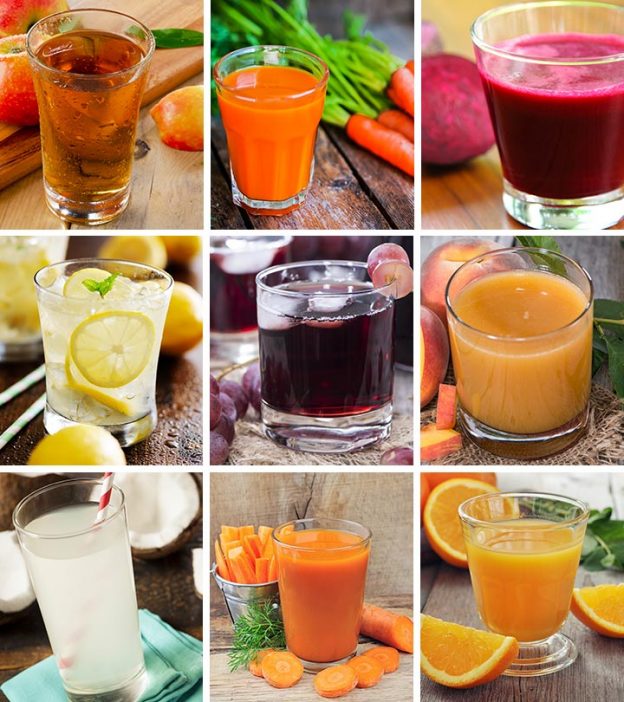
Mixing various Juices
Generally speaking, fruit juices stir up toxins and acids in the body, thereby stimulating the eliminative processes. Vegetable juices, on the other hand, soothe the jaded nerves and work in a much milder manner. They carry away toxic matter in a gentle way. Owing to their differing actions fruit and vegetable juices should not be used at the same time or mixed together.
It is desirable to use juices individually. In any case not more than three juices should be used in any one mixture. The following broad rules apply when using mixture of juices :
- Juices from sweet fruits may be combined with juices of sub-acid fruits, but not with those of acid fruits, vegetable fruits or vegetables.
- Juices from sub-acid fruits may be combined with juices of sweet fruits, or acid fruits, but not with other juices.
- Juices from acid fruits may be combined with those of sub acid fruits or vegetable fruits, but not with other juices.
- Juices from vegetable fruits may be combined with those of acid fruits or of green leafy vegetables, but not with other juices.
- Juices from green leafy vegetables may be combined with those of vegetable fruits or of the root vegetable, but not with other juices.
- Juices from root vegetables may be combined with those of green leafy vegetables, but not with other juices.
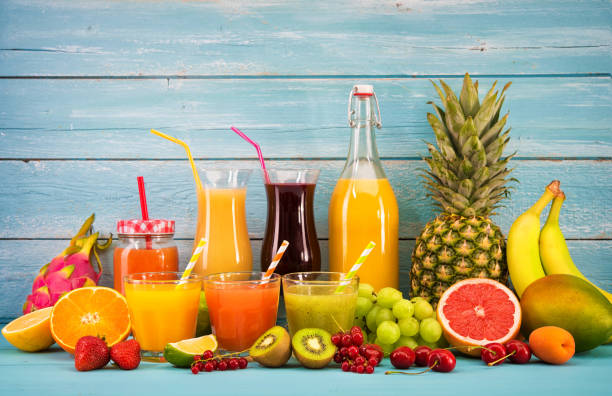
Treatment of Diseases
Some Common ailments and fruit and vegetable juices found beneficial in their treatment are mentioned below :-
| Acidity | Grapes, Orange, Mosambi, Carrot and Spinach |
| Acne | Grapes, Pear, Plum, Tomato, Cucumber, Carrot, Potato and Spinach |
| Allergies | Apricot, Grapes, Carrot, Beet and Spinach |
| Arteriosclerosis | Grapefruit, Pineapple, Lemon, Celery, Carrot, Lettuce and Spinach |
| Anaemia | Apricot, Prune, Strawberry, Red grape, Beet, Celery, Carrot and Spinach |
| Arthritis | Sour cherry, Pineapple, Sour apple, Lemon, Grapefruit, Cucumber, Beet, Carrot, Lettuce and Spinach |
| Asthma | Apricot, Lemon, Pineapple, Peach, Carrot, Radish and Celery |
| Bronchitis | Apricot, Lemon, Pineapple, Peach, Tomato, Carrot, Onion and Spinach |
| Bladder Ailments | Apple, Apricot, Lemon, Cucumber, Carrot, Celery, Parsley and Watercress |
| Colds | Lemon, Orange, Grapefruit, Pineapple, Carrot, Onion, Celery and Spinach |
| Constipation | Apple, Pear, Grapes, Lemon, Carrot, Beet, Spinach and Watercress |
| Colitis | Apple, Apricot, Pear, Peach, Pineapple, Papaya, Carrot, Beet, Cucumber and Spinach |
| Diabetes | Citrus fruits, carrot, celery, lettuce and spinach |
| Diarrhoea | Papaya, lemon, Pineapple, Carrot and Celery |
| Eczema | Red grapes, Carrot, Spinach, Cucumber and Beet |
| Epilepsy | Red grapes, figs, carrot, celery and spinach |
| Eye disorders | Apricot, tomato, carrot, celery, parsley and spinach |
| Gout | Red sour cherries, pineapple, tomato, cucumber, beet, carrot, celery and spinach |
| Halitosis | Apple, grapefruit, lemon, pineapple, tomato, carrot, celery and spinach |
| Headache | Grapes, lemon, carrot, lettuce and spinach |
| Heart Disease | Red grapes, lemon, cucumber, carrot, beet and spinach |
| High Blood pressure | Grapes, Orange, cucumber, carrot and beet |
| Influenza | Apricot, orange, lemon, grapefruit, pineapple, carrot, onion and spinach |
| Insomnia | Apple, grapes, lemon, lettuce, carrot and celery |
| Jaundice | Lemon, grapes, pear, carrot, celery, spinach, beet and cucumber |
| Kidney Disorders | Apple, orange, lemon, cucumber, carrot, celery, parsley and beet |
| Liver Ailments | Lemon, papaya, grapes, carrot, tomato, beet and cucumber |
| Menstrual Disorders | Grapes, prunes, cherry, spinach, lettuce, turnips and beet |
| Menopausal Symptoms | Fruits and vegetables in season |
| Neuritis | Orange, pineapple, apple, carrot and beet |
| Obesity | Lemon, grapefruit, orange, cherry, pineapple, papaya, tomato, beet, cabbage, lettuce, spinach and carrot |
| Piles | Lemon, orange, papaya, pineapple, carrot, spinach, turnip and watercress |
| Prostate troubles | All fruits juices in season, carrot, asparagus, lettuce and spinach |
| Psoriasis | Grapes, carrot, beet and cucumber |
| Rheumatism | Grapes, orange, lemon, grapefruit, tomato, cucumber, beet, carrot and spinach |
| Stomach Ulcers | Apricot, grapes, cabbage and carrot |
| Sinus trouble | Apricot, lemon, tomato, carrot, onion and radish |
| Sore throat | Apricot, grapes, lemon, pineapple, prune, tomato, carrot and parsley |
| Tonsilitis | Apricot, lemon, orange, grapefruit, pineapple, carrot, spinach and radish |
| Varicose Veins | Grapes, orange, plum, tomato, beetroot, carrot and watercress |
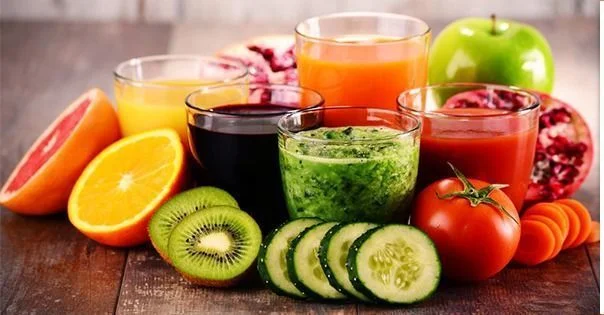
When on a raw juice therapy, the prescribed juice should be drunk every three hours. One can thus take juices five to six times a day. A glass of water mixed with lemon juice and 20-30 gm of honey may be taken first thing in the morning on arising. Thereafter, the prescribed juice may be taken at three hourly intervals. The quantity of juice on each occasion may be 250 ml on the first day. This quantity may be increased by 50 ml each succeeding day till one takes 600 ml on each occasion. The juice diet can be continued for 30-40 days without any ill-effects. The patient should take adequate rest during the raw juice therapy.
After the raw juice therapy, the return to normal balanced diet should be gradual, and in stages. In the beginning, two juice meals may be replaced by milk and fruits. Then gradually juice meals may be substituted by a balanced diet.

